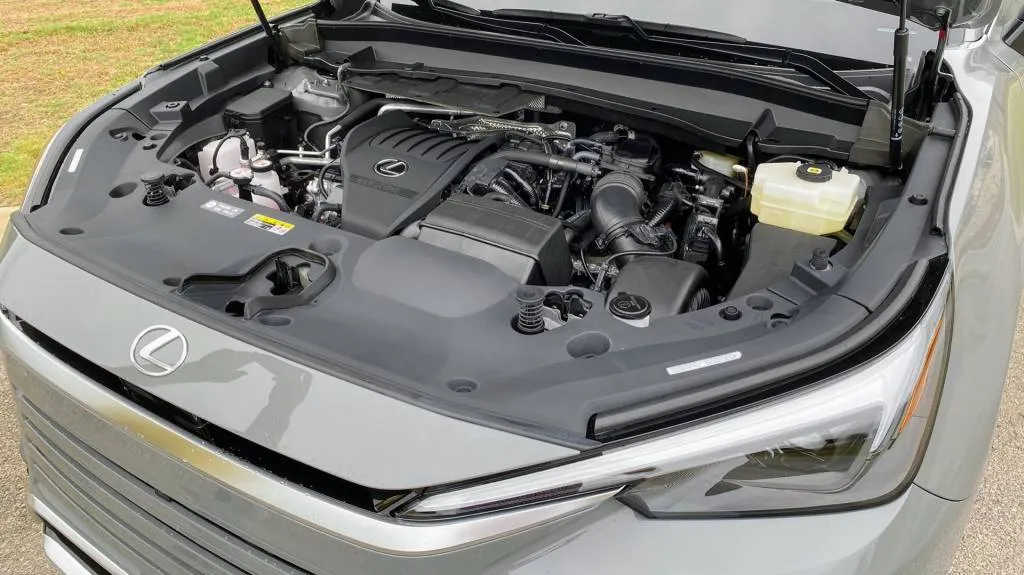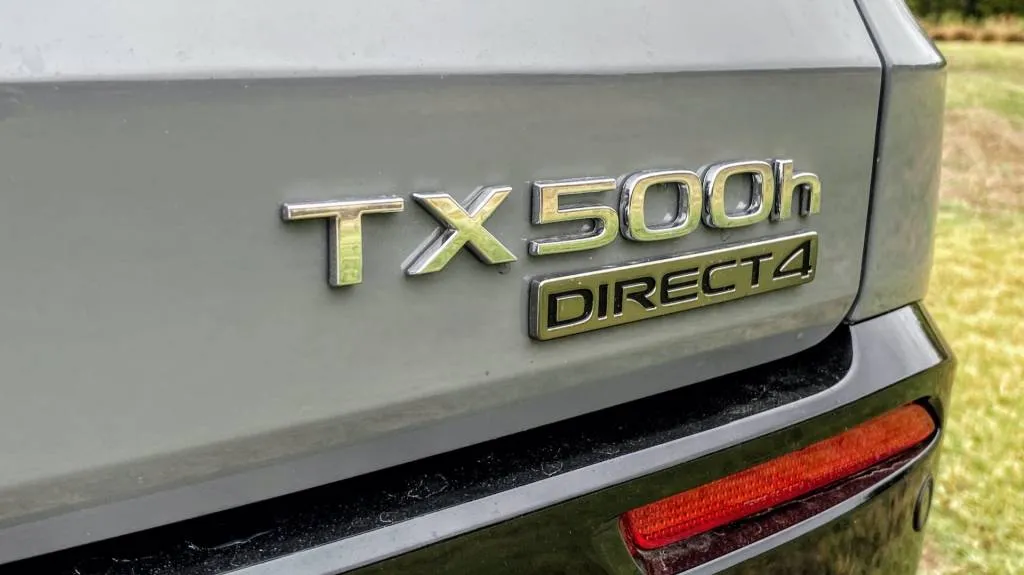
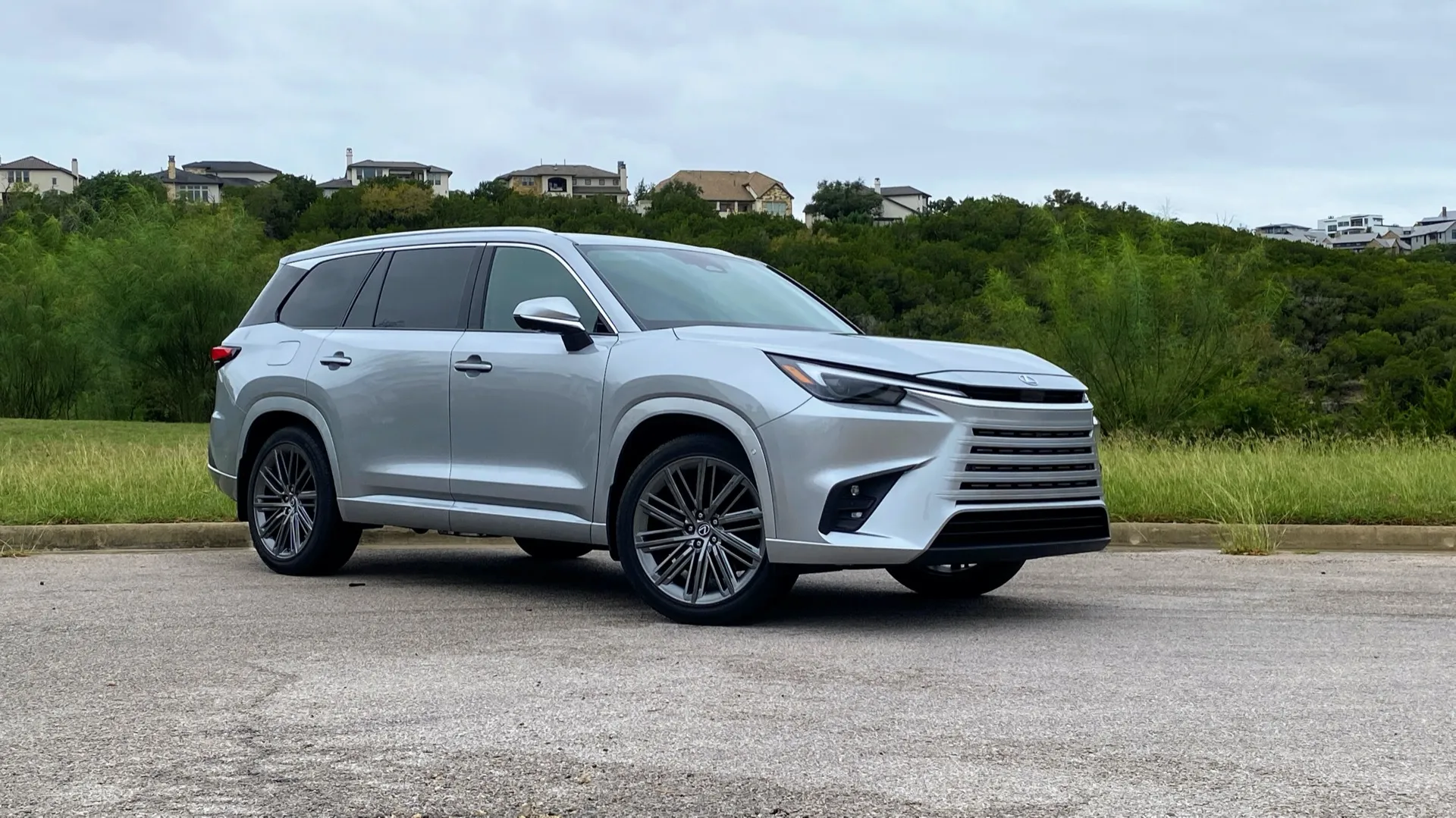
Review: 2024 Lexus TX 550h+ plug-in hybrid is the lone star of TX
The 2024 Lexus TX is exactly what it needs to be—almost, in one of its versions.
It’s a big, boxy three-row SUV with adult-size space in all rows, wide-opening doors, loads of flat-folding cargo versatility, and low lift heights—plus a TX 500h hybrid version, as well as an available TX 550h+ plug-in hybrid version that can go up to 33 electric miles.
In a first drive of the 2024 Lexus TX lineup this past week, I found that it definitely hits a sweet spot in the market. It feels more composed and settled in the corners, or on choppy road surfaces, versus even bigger, truck-based SUVs like the Lincoln Navigator or Cadillac Escalade. And in most respects it offers all the facets of a Lexus, with a feature list rich with comforts and tech, luxurious cabin trims, and an understated design that looks the part on the outside.
It’s all good in most ways that families are going to care about—just underwhelming in terms of what’s under the hood. Unless we’re talking about the sweetheart of the lineup, the top-of-the-line TX550h, which holds its own versus the Volvo XC90 Recharge, among others.
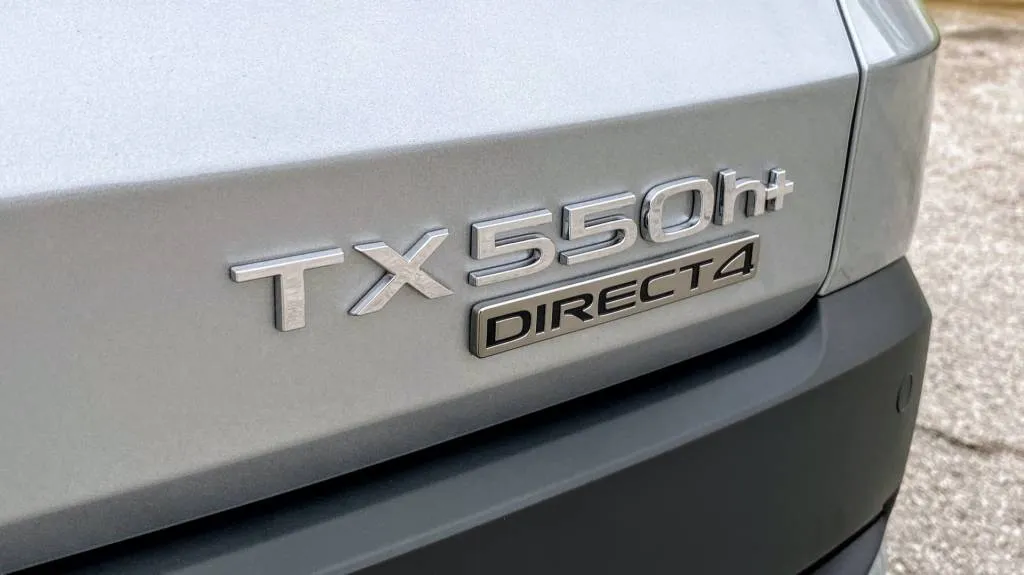
2024 Lexus TX 550h+
Skip to the plug-in, where all the pieces play well together
The TX 550h+ incorporates a 259-hp, 3.5-liter V-6 engine, as part of Toyota’s planetary hybrid system also incorporating a 179-hp traction motor. For the rear wheels there’s a 101-hp electric motor, and the entire system makes a combined 404 hp. It has a big 18.1-kwh lithium-ion battery pack that Lexus estimates will be good for a 33-mile EV range, and it’s rated at 29 mpg combined after that, as a hybrid.
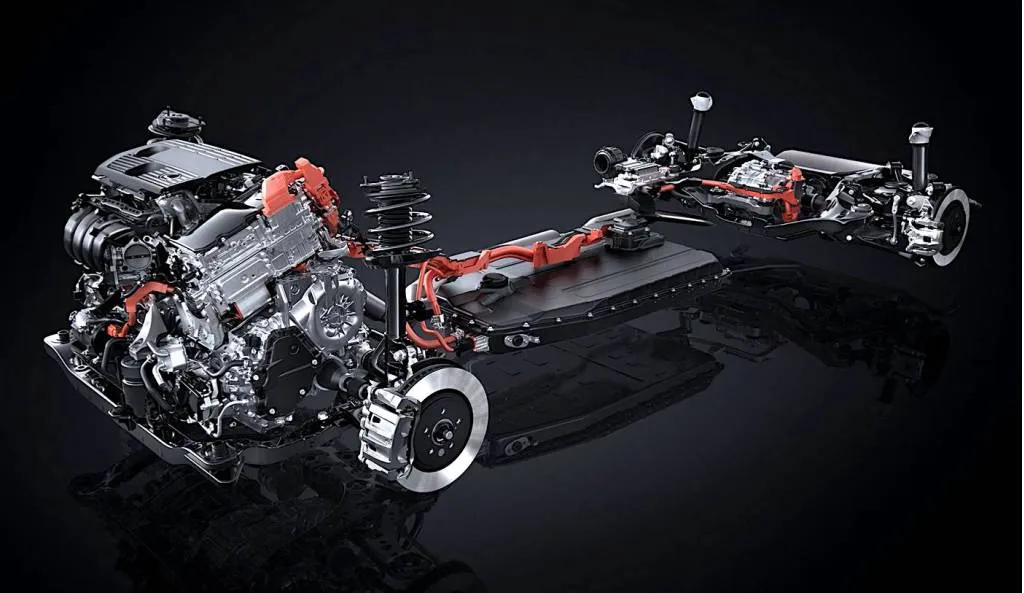
Lexus TX 550h+ plug-in hybrid system
This plug-in hybrid runs on a two-traction-motor system in its EV mode and feels quiet and quick enough. I drove it only a few miles that way—enough to sample that it doesn’t feel like a compromise and, like the excellent NX 450h+, won’t suddenly call on the gasoline engine when you floor the accelerator in EV mode.
The PHEV, as a hybrid, delivers torque right away in response to accelerator inputs. Yes, the sound from the 550h+ engine doesn’t quite rise and fall with the sensation of acceleration and speed, but it’s entirely forgivable because the V-6 sounds so much better than the four-banger in other models (I’ll get to that more).

2024 Lexus TX
Holding the EV mode button down to engage Charge mode, which tends to run the engine more to charge the battery, I aimed to sample the worst-case scenario for powertrain noise and the V-6 remained smooth and isolated.
While the 500h F Sport does feel a little edgier than the rest of the lineup, the top-of-the-line TX 550h+ is the performance sweet spot, if you have the budget for this model’s expected price somewhere north of $75,000. First deliveries of the TX 550h+ are expected in early 2024, whereas other TX versions are arriving now.
The 550h+ has a ride that’s pillowy with enough underlying firmness, matched with a powertrain that’s quick when needed. It best suits the dynamic personality of the vehicle, and most of the engine noise you hear in its hybrid mode is distant—not to mention the benefits of its plug-in electric range.
F Sport TX 500h hybrid trips on its own mixed signals
The non-plug-in TX 500h F Sport models occupy the upscale middle of the TX lineup, starting at $69,350 and $72,650 for the Premium and Luxury versions, respectively—versus as little as $55,050 for non-hybrid versions. Lexus points to it as the more engaging drive in the lineup. After puzzling over this model the most, I’d call it perky but mercurial.
The TX 500h gets an 85-hp permanent-magnet electric motor packaged within a 6-speed automatic transmission, with a slightly different version of that turbo-4, making 271 hp and 339 lb-ft. Separately there’s a 1.4-kwh nickel metal hydride battery pack, and 101-hp rear motor that exclusively drives the rear wheels. Once you count the system as a whole it makes 366 hp.
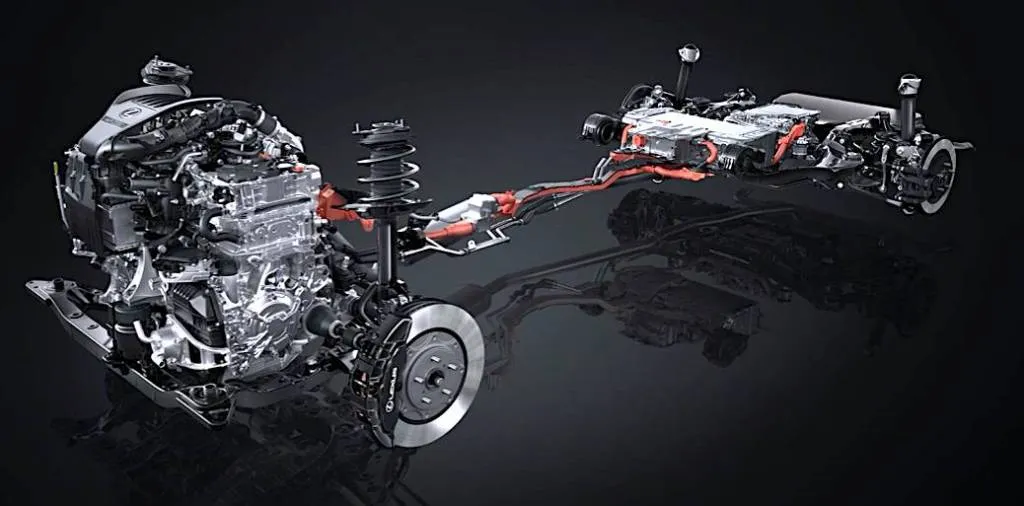
Lexus TX 500h hybrid system
The system, which is badged Hybrid Max on Toyotas, doesn’t have a name on the Lexus side. Lexus officials told me that you won’t see this hybrid system on anything without an F Sport badge.
Naohisa Hatta, chief engineer for the TX, explained to me that the 500h F Sport’s hybrid system was developed to meet a very specific set of driving attributes. It’s a set of attributes I understand better, after being in a few models with this system, but I still question its reason for being, and it feels even more out of place in the TX than in the Lexus RX or Toyota Crown.
Following other slower-moving traffic on a winding Texas Hill Country road, the TX 500h felt uncertain and indecisive at times in its powertrain behavior, including some jarring shifts while my accelerator inputs were smooth. But otherwise, this F Sport version felt entirely in its element in terms of ride and handling. Toggling between its drive modes, I couldn’t find one in which the hybrid system’s low-speed drivability issues were quelled. My pre-production model carried some uncouth vibration through the pedal area, and the soundtrack from the 4-cylinder engine is coarse despite the use of active noise cancellation tech.

2024 Lexus TX 500h F Sport
But then I stepped on it, and all was well. Distilled down, the TX 500h seems calibrated for arrow-straight streets and fast-moving curvy backroads, and it smooths out its eccentric behavior the harder you drive it.
The trip computer reminded me of a further down side to this setup, which is when you do step on it a little more, mileage plummets. Although this initial experience with the TX 500h was limited to a couple of loops amounting to less than 60 miles, over a combination of roads, it indicated that mpg numbers in the low 20s might be expected.
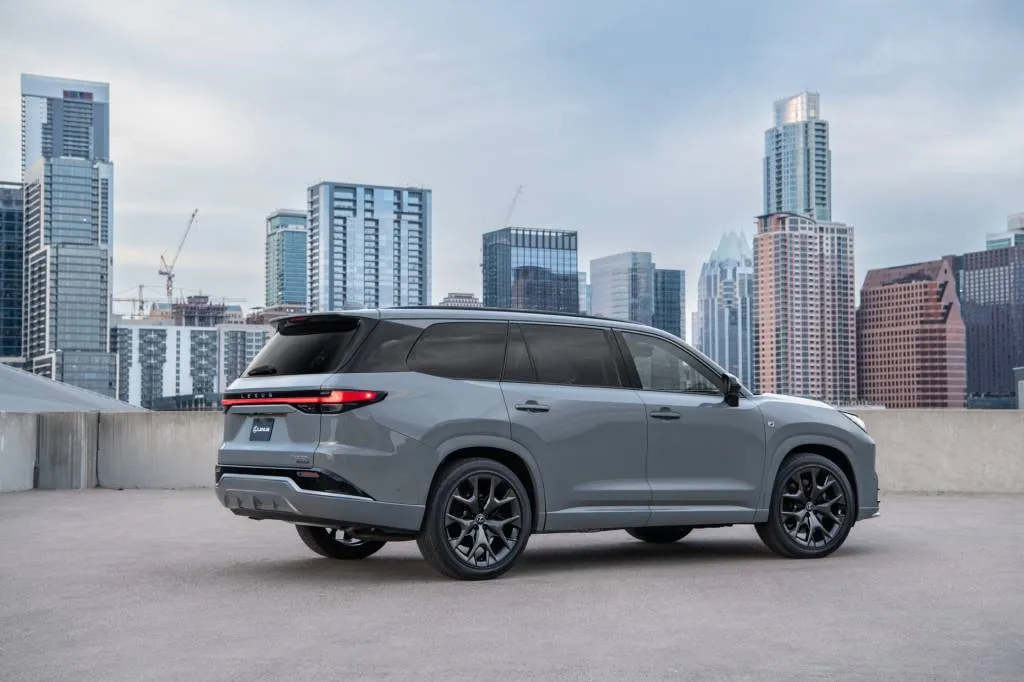
2024 Lexus TX 500h F Sport
You can’t quite have it all in one Lexus TX
While there may be a place for the Hybrid Max system, for lack of a better name, a longer stint in the 550h+ in its hybrid mode really underscored the superiority of this powertrain for this vehicle.
The 550h+ weighs about 400 pounds more than the F Sport 500h, but in anything but hard performance driving I would have guessed it the lighter of the two. After disabling the Proactive Driving Assist feature in both models, which ramps up regen at unpredictable times, the calibration of the 550h+ simply felt at ease with the whole vehicle, helping erase some of the feeling of heft with gentle regen, while also feeling quite sprightly with its wall of torque on the ready, no lumpy shifts required.
By the specs, the 550h+ also provides the quickest acceleration in the lineup, at 5.9 seconds. The 500h isn’t far behind at 6.1 seconds and the TX 350 takes 7.8-8.0 seconds. All versions can tow up to 5,000 pounds.
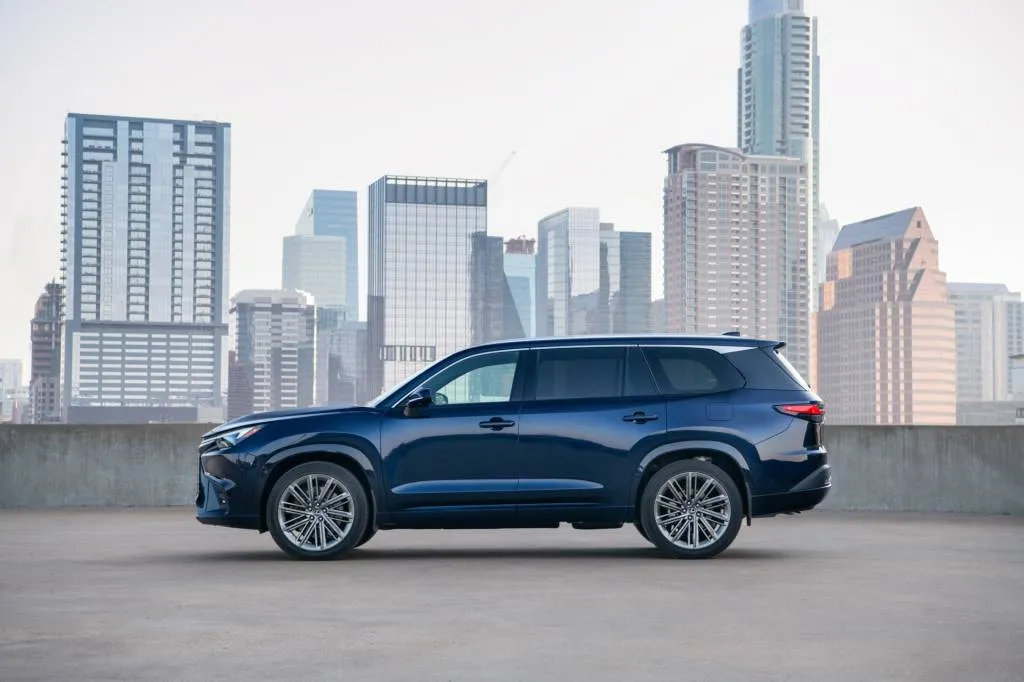
2024 Lexus TX 550h+ plug-in hybrid
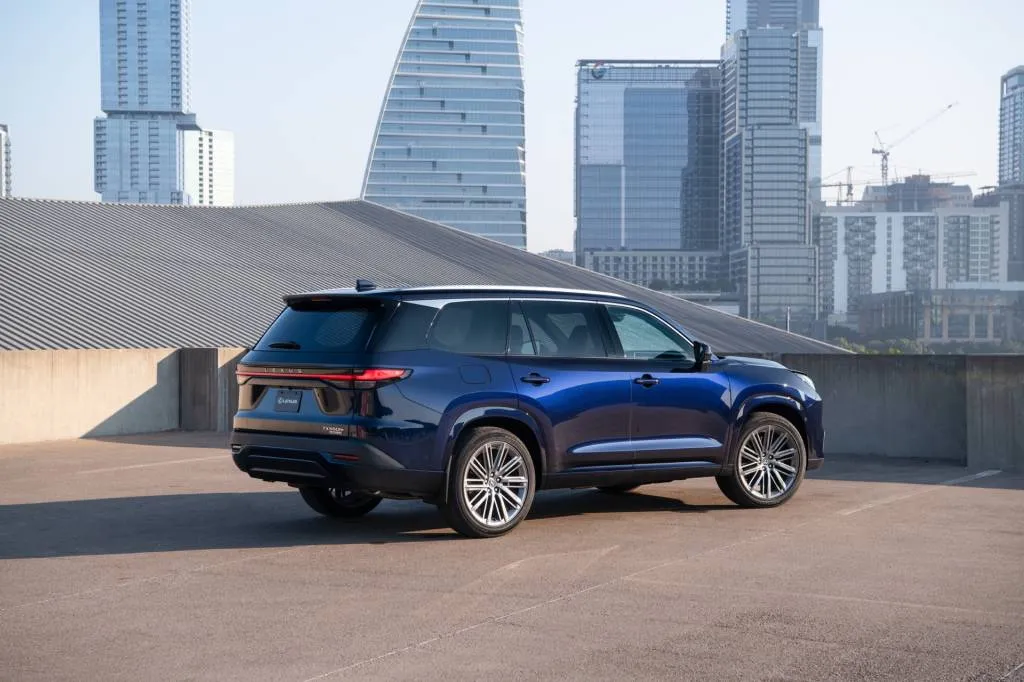
2024 Lexus TX 550h+ plug-in hybrid
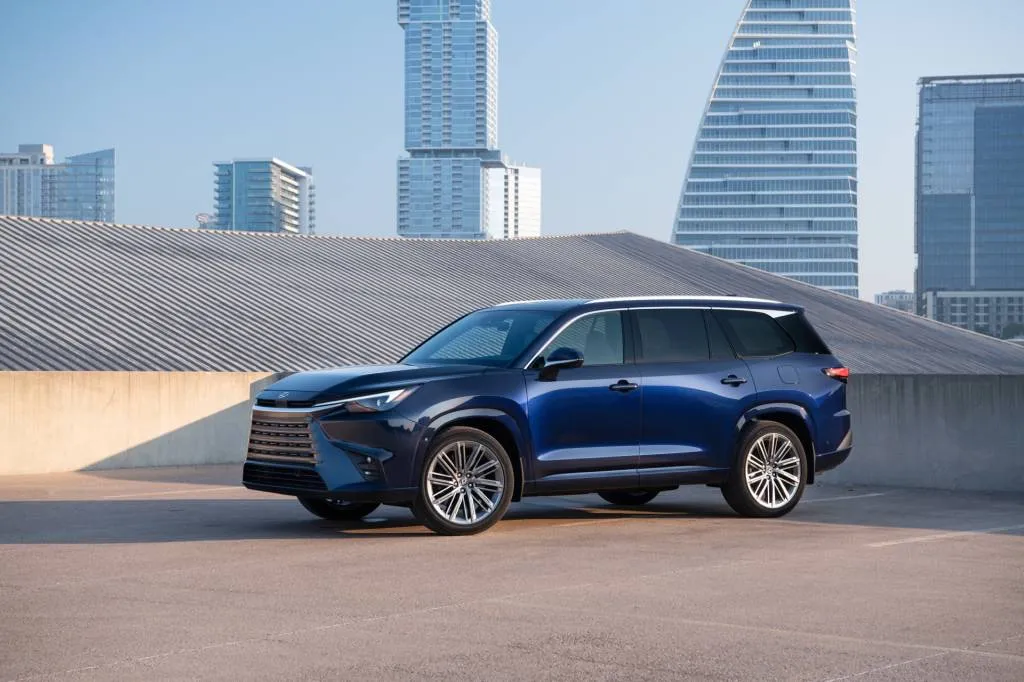
2024 Lexus TX 550h+ plug-in hybrid
Ignoring the qualms about the powertrain in the TX 500h, I appreciated it better handling in the lineup, and it’s the only model to offer a rear-wheel steering system. The TX’s front and rear suspensions get their own subframes for isolation from road harshness, and the front strut, rear five-link layout allows these models to ride and corner far more like a large sedan than a body-on-frame SUV. Lexus says that the F-Sport “heightens the driving experience at every turn,” and I agree that it feels a bit more nimble when pressed hard.
All TX models get ventilated disc brakes front and rear, but the TX 500h and 550h+ both get upgraded aluminum monobloc 6-piston front calipers with larger discs.
In a perfect world, an F Sport 550h+ with rear-wheel steering would be the true flagship that the lineup seems to be missing right now. Chief engineer Hatta didn’t dismiss the steering possibility, but perhaps the rest is yet to come.
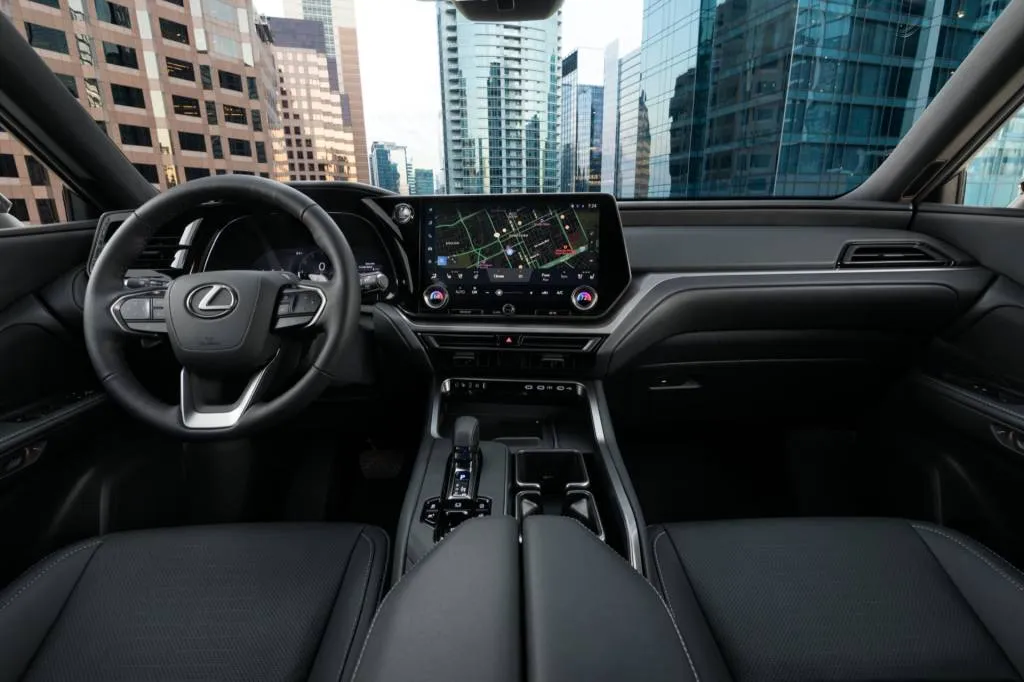
2024 Lexus TX 350 Premium

2024 Lexus TX 350 Premium
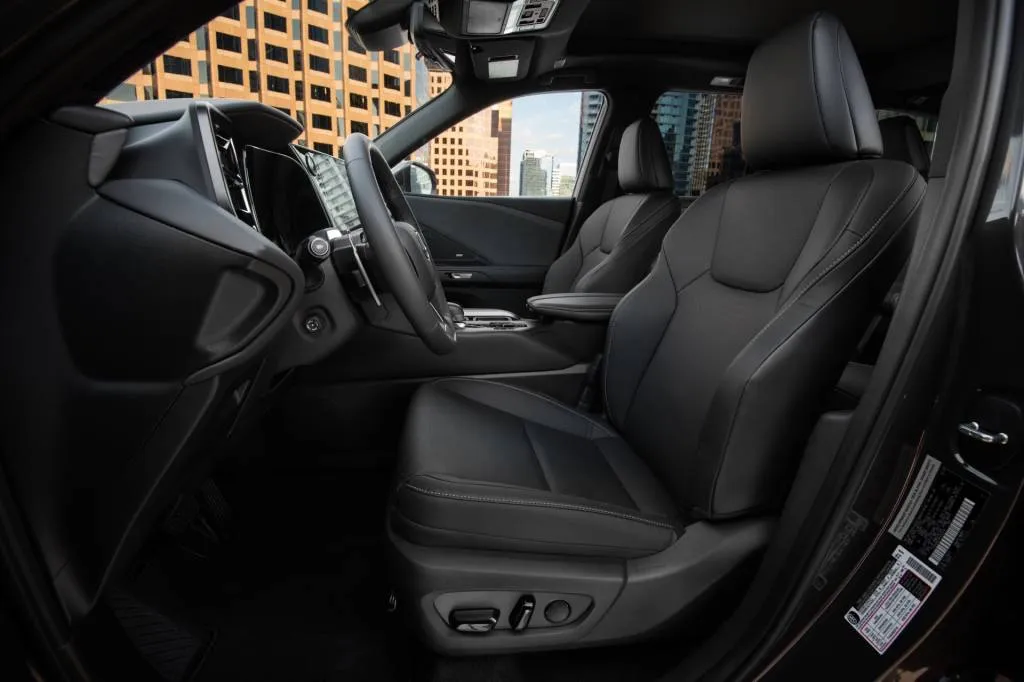
2024 Lexus TX 350 Premium
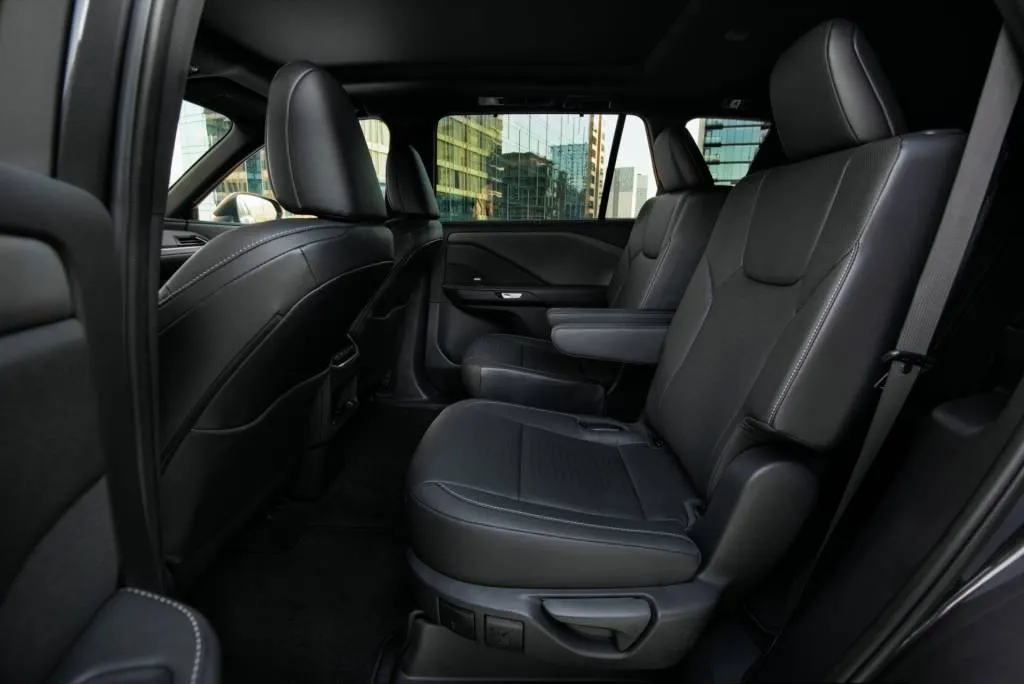
2024 Lexus TX 350 Premium
Will hybrid Lexus TX models be hard to find?
Lexus threw my impressions into a tailspin with the admission that it sees non-hybrid TX 350 versions making up 80% of the lineup in its first year—with the TX 550h+ PHEV making up a minority of the remaining 20%.
Again scrutinizing what’s under the hood, the base TX 350 is just OK. It has a 2.4-liter turbo-4, making 275 hp and 317 lb-ft of torque and running through an 8-speed automatic transmission, in front- or all-wheel-drive versions. Performance is adequate but underwhelming, with its 0-60 mph times at or near eight seconds, a deep pause from a standing start, and some downshifts of a gear or three required to tap into engine revs on two-laners in Hill Country.
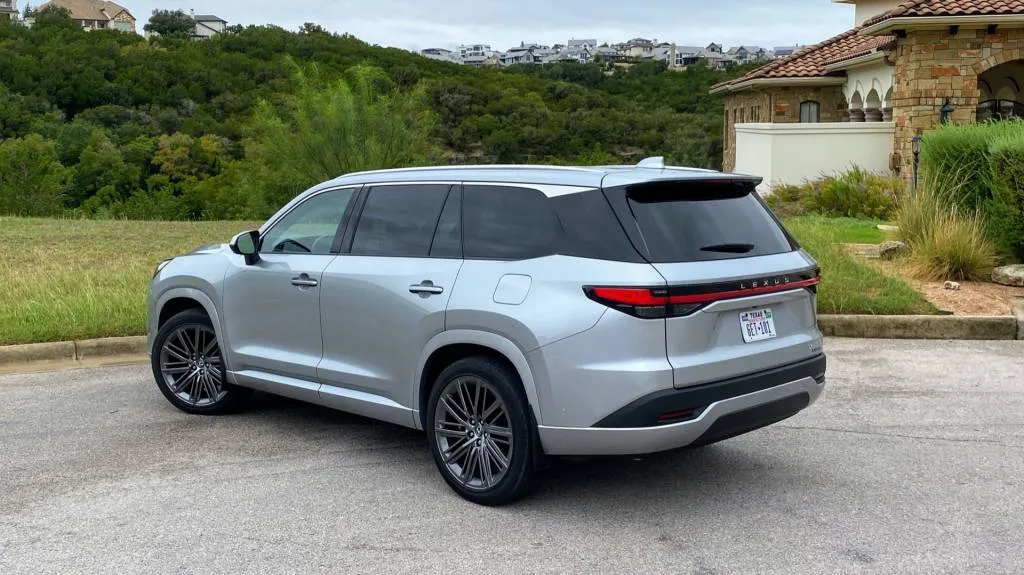
2024 Lexus TX 550h+
The picture’s less rosy when you consider that model’s fuel economy—just 23 mpg combined whether you go with front- or all-wheel drive (go with the latter, if you must). Yes, that’s just 1 mpg better than the nearly-as-large Lexus RX 350 L that was sold up until last year with a far smoother, spunkier-feeling V-6.
The 2024 TX absolutely nails the formula of what an American-sized three-row SUV should be in layout, comfort, and features. Let’s just hope it doesn’t marginalize the plug-in model that drives best and makes the most sense here for a lot of families—with near-30-mpg hybrid performance, enough electric miles for the commute, and the most refined experience. That’s what, at least for now, makes it the lone star of this lineup.
Add a comment Cancel reply
Comments (0)
Related posts


EV Guide: How to Care for Your Electric and Hybrid Car



